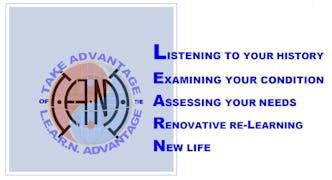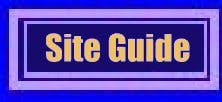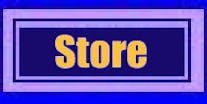AN INJURY ANYWHERE IN THE LEG OR HIP: The Injury may be a sports injury, a cut foot, a car accident, or a sprained ankle. It's the change of movement (guarding) that causes the psoas muscle to tighten, not the injury, itself. New movement ("muscle") memory starts with the pain of injury and becomes habitual, over the healing period.
HABITUAL CHOICE OF POSTURE: Sitting for long periods perched forward on the edge of a chair, tense at a high level of concentration (as in computer work), forms a new "posture memory" in muscles of sitting, which include the psoas muscles.
Once a new posture-or-movement memory has formed, the only way it can be changed efficiently is by retraining control of the involved muscles. Manipulation, massage, or adjustments are very inefficient ways of changing movement-or-postural memory.
MOVEMENT CONDITIONING, AS IN SPORTS: In athletics, much is made of consistency. In a kicking sport, such as soccer or American football, practice kicking a ball forms a movement memory of kicking. Part of that movement memory is the state of readiness to do that action, that way.
Readiness always involves a heightened state of tension. Consider the state of the runner who waits for the shot to start the race. He or she is in a heightened state of tension, called, "ready". The only reason they need to stretch is that they are in a heightened state of tension.
So, any kind of athletic conditioning that involves cultivating a movement pattern (and the state of readiness to do it) conditions us into in a heightened state of tension as a state of readiness to move.
Muscles that are already tight are especially vulnerable to "muscle pulls" -- which are really states of spasm triggered by a hard yank of already tight muscles that lack the suppleness just to let go into a free movement. The stretch reflex takes over, tightening the muscle harder, and then the muscle burn the follows triggers automatically tightening harder, in pain, and the spasm ramps up. A spastic psoas muscle is a painful psoas muscle.
Got pain in your groin? inner wall of your pelvis? behind your stomach?
Those are symptoms of a tight psoas muscle.
What Keeps Psoas Muscles Tight
Habituation. Tension-habit formation. Muscle memory. Movement memory.
Memory.
With injuries, there's a memory of the incident and how it affected our movement at that instant and in the painful healing period that followed. The memory isn't mental, but physical. With a little probing, thought, the mental memory can be made to surface, too.
Ever sprained an ankle? Shifted your weight off the hurt side? Lifted your foot and hobbled? For long enough for a new movement habit to form, you think? one that became automatic and so, involuntary? Did you notice? New movement memory.
With habitual postures of choice that involve the psoas muscles (such as sitting), the muscle fatigue of tight all the time fades into background, as we occupy ourselves with what we are doing. We get used to sitting or moving that we and it becomes involuntary, which is to say, automatic. We return to it, again and again -- until they get too tight and too sore. Movement memory.
Have you experienced that?
About sports, do you recall ever hearing about players with torn or pulled hamstrings? Tight psoas muscles work against the hamstrings work -- which then have to overtighten to move the leg. Eventually, their hamstrings catch up with them. The culprit? tight hip joint flexors, which include the psoas. Movement memory. Now, you know.
Ever felt like your legs were too heavy? Tight hamstrings.
AND ANOTHER THING: STRETCHING DOESN'T WORK THAT WELL,
IN GENERAL -- DOES IT?
Since we're on the subject of why psoas muscles stay tight, I suppose you've tried the usual psoas stretch, "the lunge" -- and found that it didn't help very much, if at all.
The reason lunges didn't work, for you, is that stretching doesn't work that well -- despite its popularity. If you've got a "movement memory " problem, stretching doesn't solve it because it doesn't give you control of movement, but only the experience of stretching or being stretched. Movement is a high-coordination activity and stretching is a low coordination activity. There's little movement-memory training in stretching, so it doesn't work.
How do we know? Look at the results of stretching.
"HOW DO I RELAX MY PSOAS MUSCLE?"
You didn't think I would leave you hanging, did you?
It's something completely different from stretching, and in another way, completely familiar, as familiar as yawning and stretching and feels about like that.
It's a way to retrain movement memory, efficiently, which means, get muscles to relax to their normal, relaxed resting, tone, efficiently and without stretching -- quickly. It also improves coordination and makes muscles feel stronger (better under control).
It's a kind of movement action related to yawning, called,
PANDICULATION
Here's an explanatory video on pandiculation -- the release action that nearly instantly improves comfort and frees movement.
Most people do just fine with this program, by themselves, but just in case, there's ...
personal attention mentoring
The Institute for Somatic Study and Development
SE 64th Avenue
Milwaukie, OR 97222
Lawrence Gold, C.H.S.E. (certified Hanna somatic educator)
telephone 505 819-0858 | TERMS OF USE | PRIVACY POLICY




WHAT CAUSES A TIGHT PSOAS MUSCLE TO STAY TIGHT?
Generally, it's an injury anywhere in the leg or hip that makes us want to take the weight off. The change of movement pattern, which continues during the pain period, forms a new movement memory ("muscle memory"). Sometimes, it's habitual choice of posture that causes the change, sometimes, it's movement conditioning, as in sports.
PERSONAL ATTENTION MENTORING
CLICK THE IMAGE, ABOVE. FOR INFORMATION.
a L.E.A.R.N. Advantage program

.
What Causes a Tight Psoas Muscle to Stay Tight?
© 2018 Lawrence Gold
Hanna Somatic Education ®
certified practitioner since 1990


About Injuries, Conditioning Problems, Psoas Muscle Memory and Stretches | How You Relax Your Psoas Muscle
There's a psoas reconditioning program that uses pandiculation movements that involve or affect the psoas muscles. It works better than stretching.





